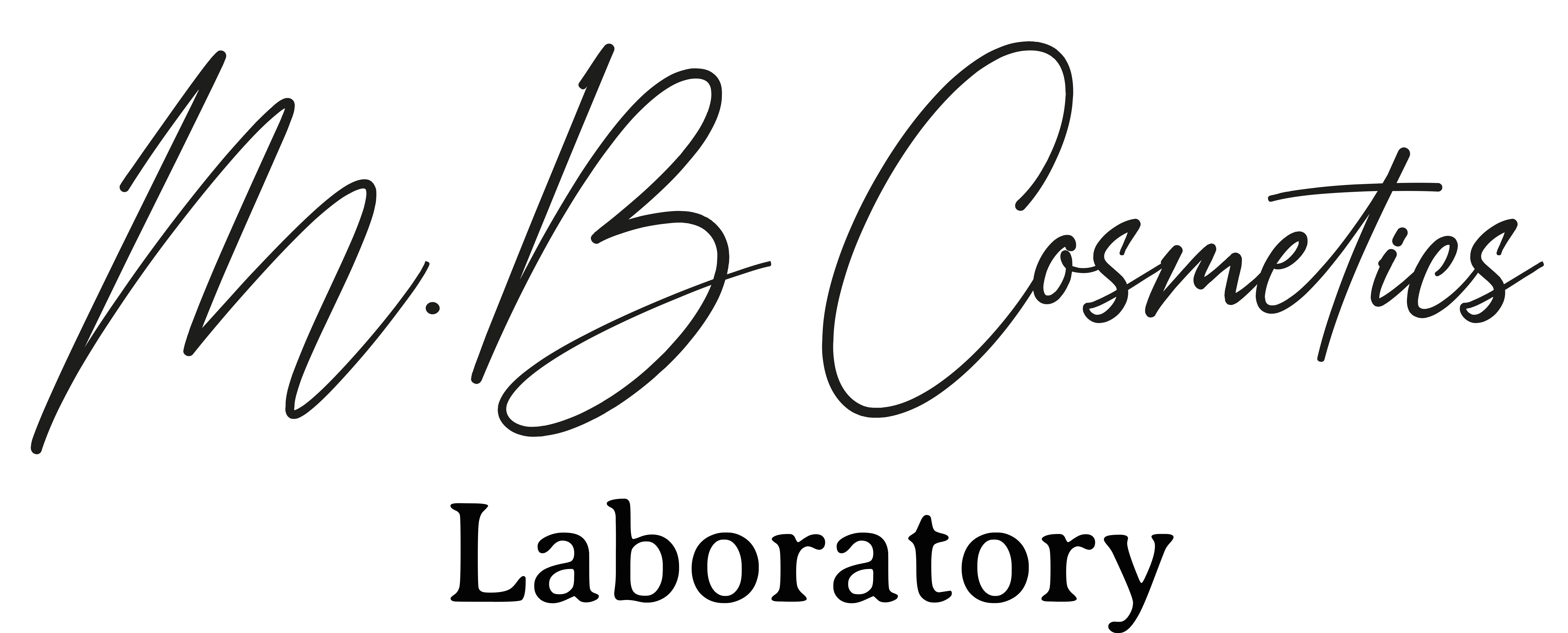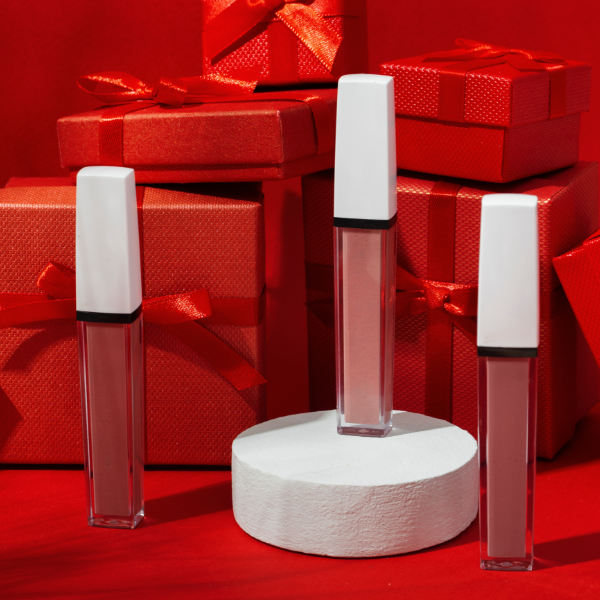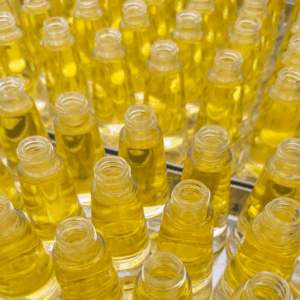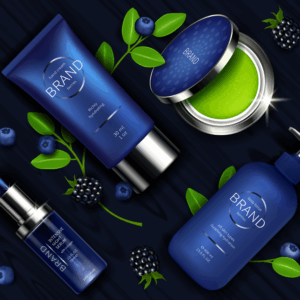Good morning! I hope it’s sunny where you are and you may not want to talk about this at all, especially with your own summer holidays approaching, but I want you to be ready for Q4. So let’s stir up some magic in the lab with today’s hot topic all about launching limited editions for the holidays!
December is a thrilling month for the beauty industry. The pressure is on, holiday shopping peaks, customers are in gifting mode, and the potential for Q4 revenue is enormous. But for indie brands, it also comes with a unique challenge: should you create and launch a limited edition product for the holidays, or stick to your existing line?
It’s tempting to jump in. Limited editions are a powerful way to build buzz, test new textures or scents, and position your brand as festive and relevant. But they can also pull your focus, stretch your team, and leave you with unsold seasonal stock. The key is in doing it strategically.
Let’s explore how to approach limited edition launches with clarity, creativity, and control, so you finish the year strong, not scattered.
Is a Limited Edition Right for You?
Before you commit, get honest about your current capacity. Do you have room in your production calendar to develop something new? Can you create a small batch that won’t derail your core line? Will this product reflect your brand identity, both visually and philosophically? And importantly, can you learn something from it, like how your audience reacts to a new texture or scent?
If you’re nodding “yes” to at least a few of those, a limited edition may be a smart move. If not, you’re often better off reworking an existing hero product with seasonal packaging or messaging instead.
Holiday shoppers behave differently. December is peak impulse-buying season, with limited-time offers and emotional storytelling driving conversion. Consumers are also increasingly buying for themselves, treating festive editions as a form of self-care, not just gifts. A limited edition taps into that scarcity-driven excitement, making your product feel timely and essential.
In 2025, holiday shoppers are drawn to experiential gifting and wellness. Limited edition skincare products tap into this desire by offering festive rituals that feel special. Personalisation also resonates, consumers love sets tailored to their needs. By aligning your limited edition with current trends among YOUR audience, you create a product that not only sells but also deepens emotional connections, setting the stage for lasting brand loyalty.
What Makes a Holiday Product Feel Special (Without Reinventing Everything)?
Great holiday launches aren’t always about starting from scratch. They can be about giving your existing formulas a new context, one that feels festive, indulgent, and emotionally resonant. The most successful limited editions reuse what already works: your hero ingredients, familiar textures, and proven formats. Then, they layer in just enough seasonal flair to make the product feel new, desirable, and gift-worthy.
Let’s look at how brands do this without compromising identity or operational flow:
Texture tweaks: One of the easiest ways to give an existing product a seasonal makeover is by changing the feel, not the function. Tatcha, for example, often releases a whipped version of their classic moisturiser for holiday sets—it’s the same performance, but with a more cloud-like texture and a hint of added luxury. You don’t necessarily need a new INCI list, sometimes a shift in the manufacturing process works perfectly well. Sometimes, you do need to slightly tweak the ingredients and in that case, please don’t forget to allow sufficient time for mandatory lab testing (stability & challenge tests) and updated documentation & registration before launching for the holidays!
Scent swaps: L’Occitane and The Body Shop are masters of this. Each year, they re-release top products like body butters, hand creams, and shower gels in limited-edition scents—think Almond & Vanilla, Spiced Neroli, or Frosted Plum. It’s seasonal without being gimmicky. You can do the same by infusing an existing formula with a skin-safe seasonal essential oil blend like frankincense and orange or vanilla and cardamom. You will have to update the lab tests & documents so please allow sufficient time for this.
Mini kits with ritual framing: Drunk Elephant’s “The Littles” turns travel-size bestsellers into highly giftable rituals. These aren’t new products, they are curated experiences with a fresh label. For your brand, this could mean bundling a cleanser, mist, and cream as a “Winter Skin Reset Kit” with instructions printed on the inner box flap.
Visual details: Shifting your packaging to a seasonal colour palette or adding gold foil, snowflake embossing, or botanical illustrations is often enough. Look at Glow Recipe, for example, they lean heavily into pinks, metallic accents, and frosted finishes during Q4, without changing their core aesthetic. If your packaging is already minimal, a branded sleeve or festive print insert might be all you need.
Product renaming: How something is named often matters more than what’s inside. Instead of “Lip Butter”, call it “Holiday Glow Balm”. These micro-adjustments give your audience permission to treat familiar products as limited-edition indulgences.
Ultimately, a holiday product feels special when it creates a sensory or emotional moment. You’re not just selling skincare, you are selling warmth, ritual, nostalgia, and care. And that can be done powerfully with what you already have on your shelf.
Planning Your Limited Edition Like a Pro
Holiday launches can go off the rails when logistics get overlooked. That’s why production planning is just as important as product design.
Start by using what you already have, your current raw materials and packaging formats. Instead of sourcing new exotic ingredients you’ll only use once and that will cost you an arm and a leg.
Repurpose your usual containers with holiday-themed labels, sleeves, or digital prints. Avoid custom moulds or new packaging unless you’re sure of a sell-out. And crucially, set a sell-out strategy. Know exactly how many units you’re producing, what the holiday shipping cut-off is, and whether unsold stock can be repurposed for January.
Limited editions can also be the perfect conversation starter with boutique retailers. Many shops look for seasonal SKUs that stand out on shelves and offer high gift appeal. A small-run festive product, with strong packaging and clear usage, can help your brand land on retail shelves without long-term commitment. Just make sure your wholesale margins hold up, and you’re clear on sell-in vs sell-through timelines.
Regulatory compliance is the foundation of a successful limited edition launch, so ensure your product meets your country’s standards.
Keep Your Marketing Cohesive (and Festive)
Your holiday edition should feel like you, just dressed up for the season. Stick to your existing brand voice and design language. If you use minimal packaging and clean fonts, don’t suddenly go full glitter and script. Use naming conventions that align with your range and add a little holiday twist! And don’t just sell a scent, sell a story. That emotional resonance is what creates connection (and conversion).
Social media platforms like TikTok and Instagram are holiday marketing powerhouses, and your limited edition launch should shine in these spaces. So make sure to have your social media strategy adapted for the holiday season!
Beyond the Holidays: Turning Insights into Strategy
One of the biggest hidden benefits of a limited edition is the feedback loop. You get real-time insight into what your audience loves, whether that’s a new texture, a faster-absorbing balm, or a particular fragrance profile.
Track what sells quickly, which formats perform best, and which copywriting hooks generate buzz. Then use that data to inform next year’s core product development. Sometimes, a limited edition becomes your next bestseller.
Repositioning Leftover Stock Without Diluting Your Brand
If your holiday limited edition doesn’t sell out by New Year’s, don’t panic—and definitely don’t jump straight to heavy discounting. Limited editions are powerful, but they also carry the risk of short-term relevance. The key is learning how to reframe what’s left, rather than seeing it as wasted inventory.
Start by stripping away the overtly festive language. “Holiday Glow” can become “Winter Radiance.” “Festive Calm Balm” might relaunch as “Evening Recovery Ritual.” If your packaging design was kept relatively neutral, think soft metallics, botanical patterns, or minimalist seasonal colour accents. You’ve got room to manoeuvre. A new label sleeve, product card, or even a simple shift in messaging on your website can extend its life into Q1 without confusing your customer.
Focus on themes that naturally follow the holiday period: winter dryness, skin recovery, after party season, new year self-care, or “January reset” routines. These are real needs consumers feel in early Q1 and your product can solve them, even if it started life as a December launch.
What you want to avoid is panic-discounting that eats into your margins or cheapens your perceived value. A 40% off sale in early January might move units, but it trains your customer to wait for markdowns. Instead, offer strategic value: a bonus sample with purchase, a gift-with-purchase tier, or a promo code for the next purchase with each order.
Done right, your leftover stock becomes a second opportunity, not a failure. And more importantly, you maintain your brand’s integrity while still meeting your revenue goals.
Before Saying Goodbye, Let Me Leave You With My Final Thoughts: Make It Meaningful, Not Messy!
You don’t need an entirely new formula or a full new line to win December. The best limited editions are thoughtful extensions of what your brand already does best, amplified for a specific moment.
Keep it simple. Keep it strategic. Use the season to connect with your audience in a way that feels generous, joyful, and on-brand.
And if sustainability is core to your brand, don’t assume limited editions are off-limits. Use seasonal packaging that’s recyclable, compostable, or refillable. Limited shouldn’t mean disposable, it should still reflect your values.
Happy Q4 planning!
Here’s to formulas that work and brands that thrive!
From My Lab to Yours!
Rose









Add comment